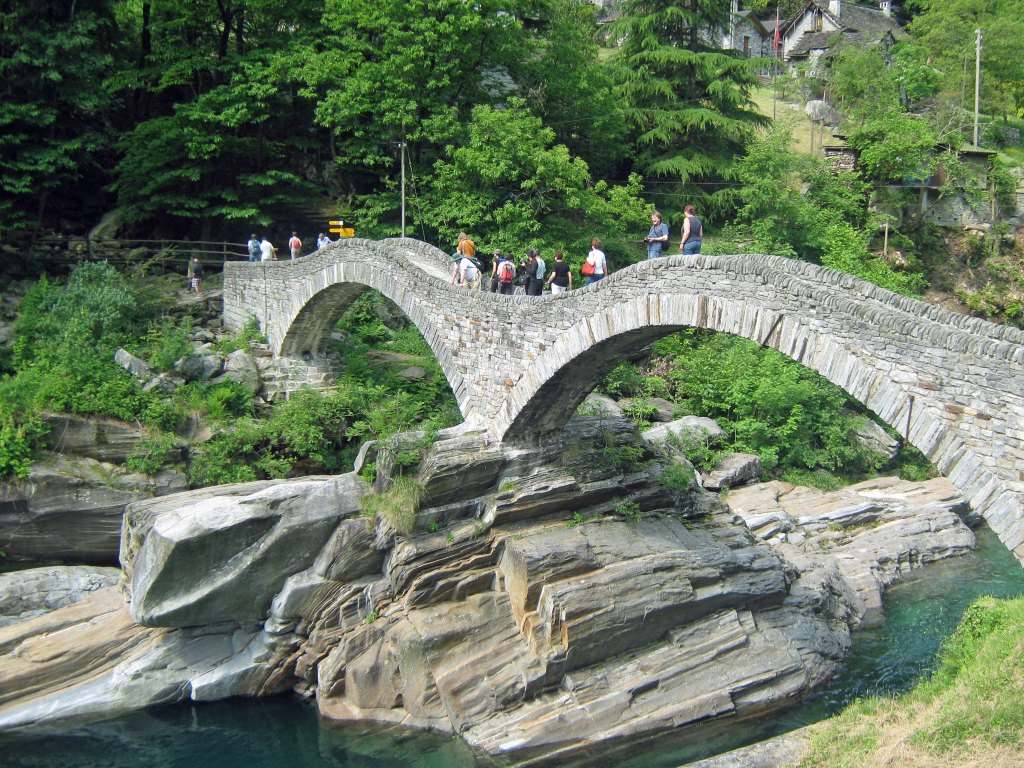
Since I’m too busy for regular blogging, this week is geology picture-a-day week here at Georneys. Several other geobloggers have also decided to join me in this blogging meme. Feel free to start today, even if you didn’t post a picture yesterday.
Today’s geology picture is of a beautiful, old double arch bridge spanning the Verzasca River at Ponte dei Salti in Lavertezzo, Switzerland. The middle part of the bridge rests on a small section of uplifted gneiss. The Verzasca is a fast-moving mountain stream that has carved a narrow, V-shaped valley in the crystalline bedrock, which is gneiss of both sedimentary and igneous origin. The river is renowned for its bright color (turquoise in places), beautiful rocks (the gneiss ranges from light brown to gray, with the colors intermingling), and deep pools. The pools are so deep that they are often frequented by divers.
I visited the Verzasca River back in 2010 as part of a class field trip for the Geodynamics Course at Woods Hole Oceanographic Institution.
